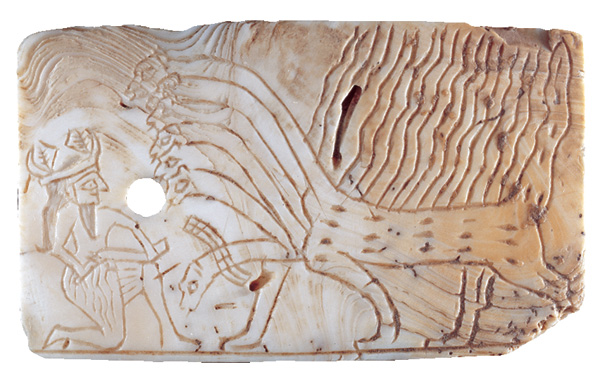Image Details

M. Amar and M. Greyevsky/Bible Lands Museum/Jerusalem
The seven-headed beast meets his demise. His lowest head droops from a wound inflicted by the kneeling warrior-god, at lower left, on this 1.5-inch shell inlay from Mesopotamia, dated from 2800 to 2600 B.C.E. The plaque is believed to depict the Sumerian deity Ninurta slaying a seven-headed monster who was trying to take over the world. According to author Hurowitz, the later tales of Marduk slaying Tiamat may have been conscious rewrites of the Sumerian tales, in which the Babylonian authors made Marduk out to be the new Ninurta. Similarly, the biblical authors may have improved upon aspects of Babylonian myths to show that their God, Yahweh, could do everything a Near Eastern god should do—and more.
